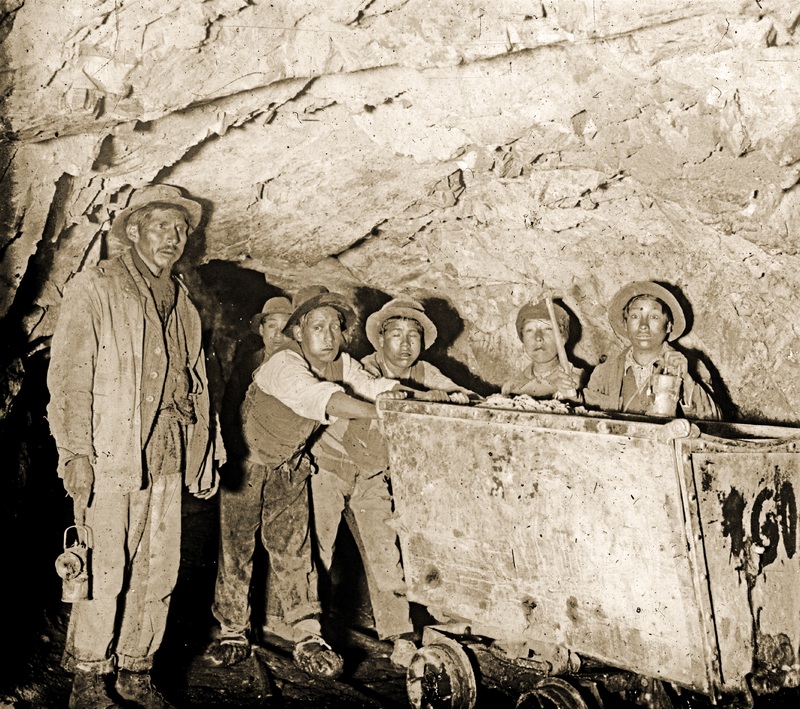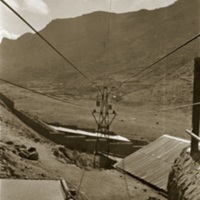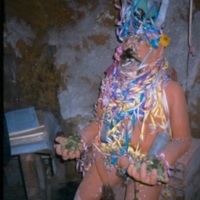James Duncan and the mining workforce
James Duncan was an amateur photographer. He documented his life in Bolivia with photographs which are now in the University of Aberdeen's Special Collections. His equipment included a stereoscopic camera, a novelty at the time, which took two images with separate lenses allowing them to be viewed in 3D. His photographs record the Bolivian mining workforce and conditions in the mines as seen throught he proprietor's eyes.
The images show that children worked underground, as they do in some unregulated cooperative mines today. Women formed a major part of Duncan's regular workforce, washing and selecting ore in the concentration plant, playing a more significant role than in present-day mines where their activities are largely confined to working the slag piles. One member of Duncan's workforce who does not appear is the famous North American outlaw, Butch Cassidy, who was employed for a while at Huanuni as a security guard.
Duncan's photographs portray his mines as organised workplaces with modern infrastructure, such as winching machinry and pneumatic drills, as used in present-day mines in Bolivia. They also show Duncan's innovations, such as the aerial rope-way connecting mine to concentration plan, which cut costs but took work from indigenous hauliers working with llamas and mules.
The photographs erase an indigenous history of mining and metallurgy, including other claims to minerals. For instance, Duncan took images of 'Diablada' dancers dress in devil costumes at the Oruro Carnival, but he did not photograph the underground rituals in Bolivian mines, in which miners make libations and sacrifices to a being known as the Tio ('Uncle'). Portrayed in the form of the Christian Devil, the Tio is considered the owner of minerals who can make miners rich and offer protection against mining accidents, but can also kill. Perhaps Duncan did not take photographs because the rituals were hidden from him, or perhaps he knew about them but was uncomfortable with them. His choise of what to photograph probably reflects the values of a Bolivian elite contemptuous of indigenous culture.





